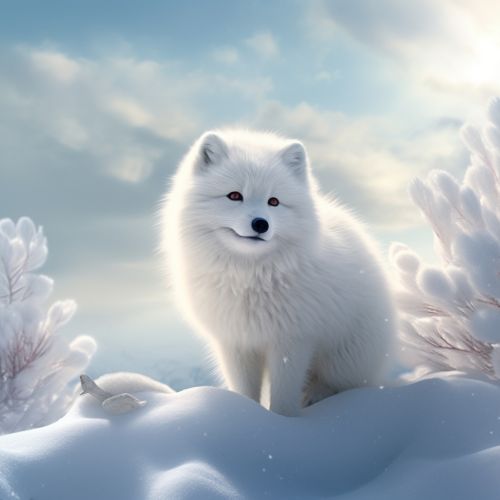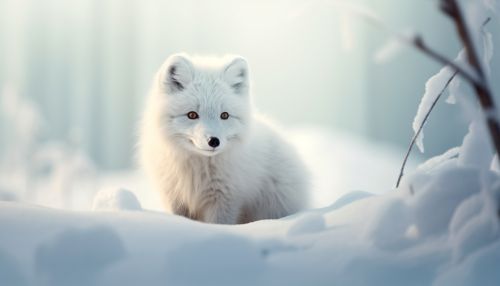Arctic Fox
Taxonomy and Evolution
The Arctic fox (Vulpes lagopus) is a small fox native to the Arctic regions of the Northern Hemisphere. It is well adapted to living in cold environments, and is best known for its thick, warm fur that is also used as camouflage. The Arctic fox is classified in the family Canidae, which includes dogs, wolves, and other fox species. It is a member of the genus Vulpes, which comprises about 12 species, including the red fox (Vulpes vulpes).


The Arctic fox is believed to have evolved in Europe, a theory supported by a 360,000-year-old tooth found in the United Kingdom. Its ancestors likely migrated across the Bering land bridge between 20,000 and 8,000 years ago during the last ice age.
Physical Characteristics
Arctic foxes are well adapted to their habitat. They have a deep thick fur which is brown in summer and white in winter, providing excellent insulation and camouflage. The fox's round, compact bodies minimize surface area that is exposed to the cold air. Their muzzle, ears, and legs are short, which also conserves heat.
Behavior and Ecology
Arctic foxes are primarily solitary animals living in small family groups. They are opportunistic feeders, eating practically any animal, alive or dead. Although they prefer small mammals, they will eat fish, birds, and even berries. During April and May, they feed on ringed seal pups when the young animals are confined to a snow den and are relatively helpless. Fish beneath the ice are also an important food source in winter.
Reproduction
Arctic foxes are monogamous, and both parents will care for the offspring. Litters tend to be large, ranging from five to 25 kits, due to the abundance of food in the summer months. The female gives birth to and cares for the kits in a den, which can be used by many generations of foxes.
Distribution and Habitat
The Arctic fox is found throughout the entire Arctic tundra. Through evolution, it has made several adaptations to its environment and climate. It makes its home in burrows, and in cliffs near the ocean where food is plentiful.
Conservation Status
The Arctic fox is not currently considered endangered. However, it faces significant challenges due to climate change. As the Arctic warms, red fox territories are expanding northward, leading to competition for resources and potential displacement of the Arctic fox.
